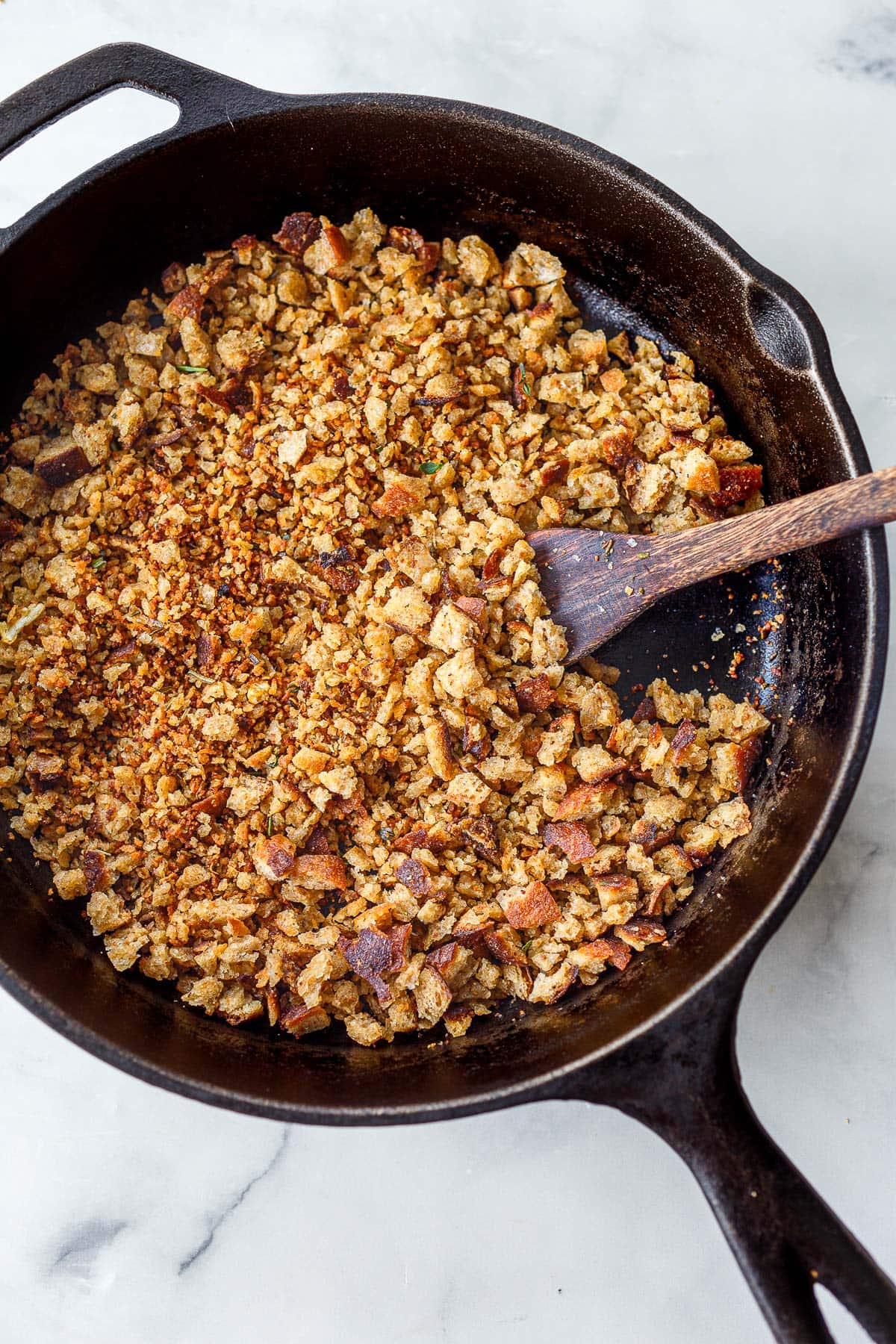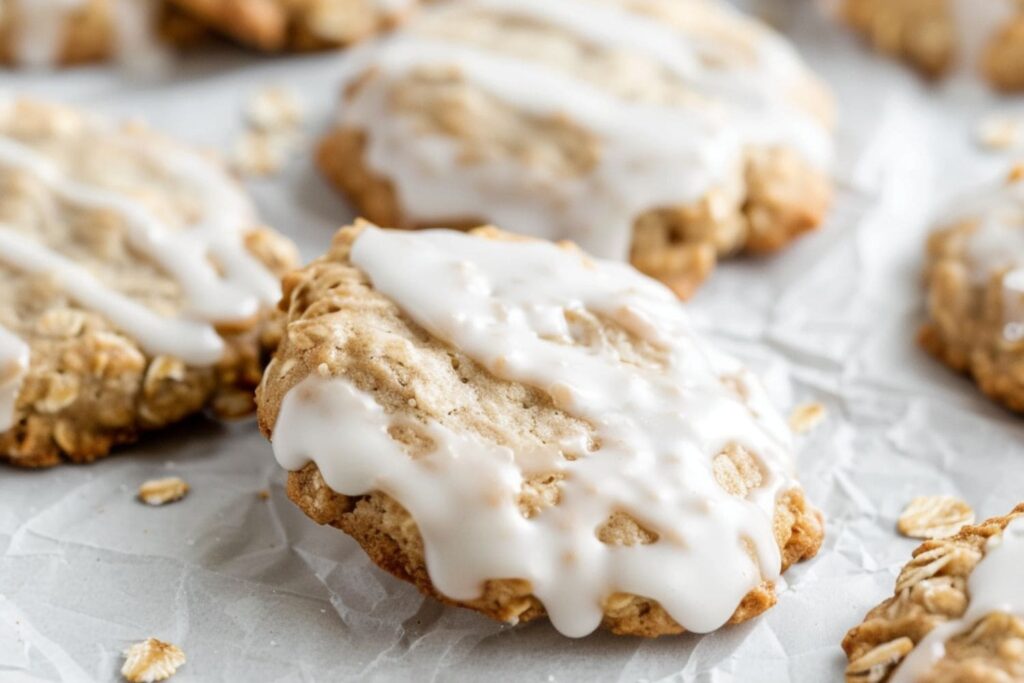Delicious Pangrattato: Crunchy Italian Breadcrumbs from Leftover Sourdough
Transform your leftover sourdough bread into delightful Pangrattato! These crispy Italian breadcrumbs are not just easy to make; they add a fantastic crunch to your pasta, salads, and soups. In just a few steps, you can create a scrumptious topping that elevates everyday meals.

What is Pangrattato?
Pangrattato translates to “breadcrumbs” in Italian. Often called the “poor man’s parmesan,” this flavorful condiment is made using day-old bread that’s seasoned with olive oil, fresh herbs, and garlic before being toasted to a perfect golden brown. It’s a simple yet impactful way to use up leftover bread!
Why You’ll Love This Recipe
Perfect for Enhancing Dishes: These crispy bits add an incredible texture and savory flavor to dishes. Whether you’re serving pasta, roasted vegetables, or a warm soup, a sprinkle of pangrattato instantly enhances the taste and experience of your meals.
Healthier Alternative: Unlike store-bought breadcrumbs, which can be highly processed and contain questionable additives, pangrattato is made from wholesome ingredients, allowing you to control what goes into your food.
Waste Not, Want Not: Making pangrattato is an excellent way to preserve that leftover sourdough bread, giving it a new life and maximizing your culinary resources.
Pangrattato Recipe Ingredients
- Sourdough Bread: Thick slices of day-old sourdough work best. However, feel free to experiment with any type of bread you have on hand.
- Extra Virgin Olive Oil: High-quality olive oil is key—its flavor will shine through in the final product.
- Garlic Cloves: Fresh garlic adds a robust taste, but garlic powder can be used as a substitute if preferred.
- Fresh Herbs: I recommend thyme and rosemary, but feel free to swap in oregano, parsley, dill, or tarragon for your personal touch.
Pangrattato Variations
Feel free to customize your pangrattato with any of the following options:
- For Gluten-Free: Substitute with your favorite gluten-free bread.
- Spice It Up: Add black pepper or chili flakes for some heat.
- Nutty Flavor: Toss in some chopped almonds, walnuts, or pine nuts for added crunch.
- Fresh Zest: Lemon zest adds a beautiful citrusy note.
- Add Cheese: Grated Parmigiano Reggiano or Pecorino Romano elevates the flavor even further.
- Nutritional Yeast: A great way to introduce a cheesy flavor while also boosting your B Vitamin intake.
How to Make Pangrattato (Two Ways!)
1. Prepare the Mixture
Start by tearing the bread into rough chunks and placing them into a food processor. Add the grated garlic, salt, herbs, and olive oil. Pulse for about 30 seconds until the mixture resembles coarse crumbs. The texture should be a bit irregular—this will give your pangrattato that satisfying crunchy bite!

2. Toast Your Mixture
Now, it’s time to give it a golden toast!
Stovetop Method
Pour the bread mixture into a frying pan or cast-iron skillet over medium heat. Stir every minute for about 15 minutes, or until the pangrattato turns golden and crisp.
Oven Method
Spread the mixture on a parchment-lined baking sheet and pop it in a preheated oven at 325°F (163°C). Bake for 25 to 35 minutes, stirring halfway through to ensure even toasting.

Completion
Once golden and crisp, remove from heat and let it cool. Your homemade pangrattato is ready to use!
Storing and Freezing
Keep your pangrattato in an airtight container at room temperature for up to two weeks. For longer storage, freeze it for up to three months. Just make sure to thaw and use it as needed.
Ways to Use Pangrattato
Pangrattato isn’t just for pasta! Here are a few ideas to inspire you:
- Pasta Dishes: It pairs beautifully with caramelized leek pasta, lemon pasta, or baked feta pasta.
- Soup Enhancer: Sprinkle on North African carrot soup, salmon chowder, or potato leek soup.
- Salads: A great addition on top of Caesar salad or white bean salad.
FAQs
Pangrattato is an Italian toasted breadcrumb made with garlic and herbs to serve as a flavorful topping for pasta, soups, salads, and vegetables.
Gremolata is a fresh mixture of herbs, garlic, olive oil, and lemon juice, whereas pangrattato is seasoned breadcrumbs.
The Italian term “pangritata” means “grated bread.”
Your pangrattato can be stored in an airtight container at room temperature for up to two weeks or frozen for up to three months.
Absolutely! While sourdough is an excellent choice, any bread can be used, so feel free to get creative!











